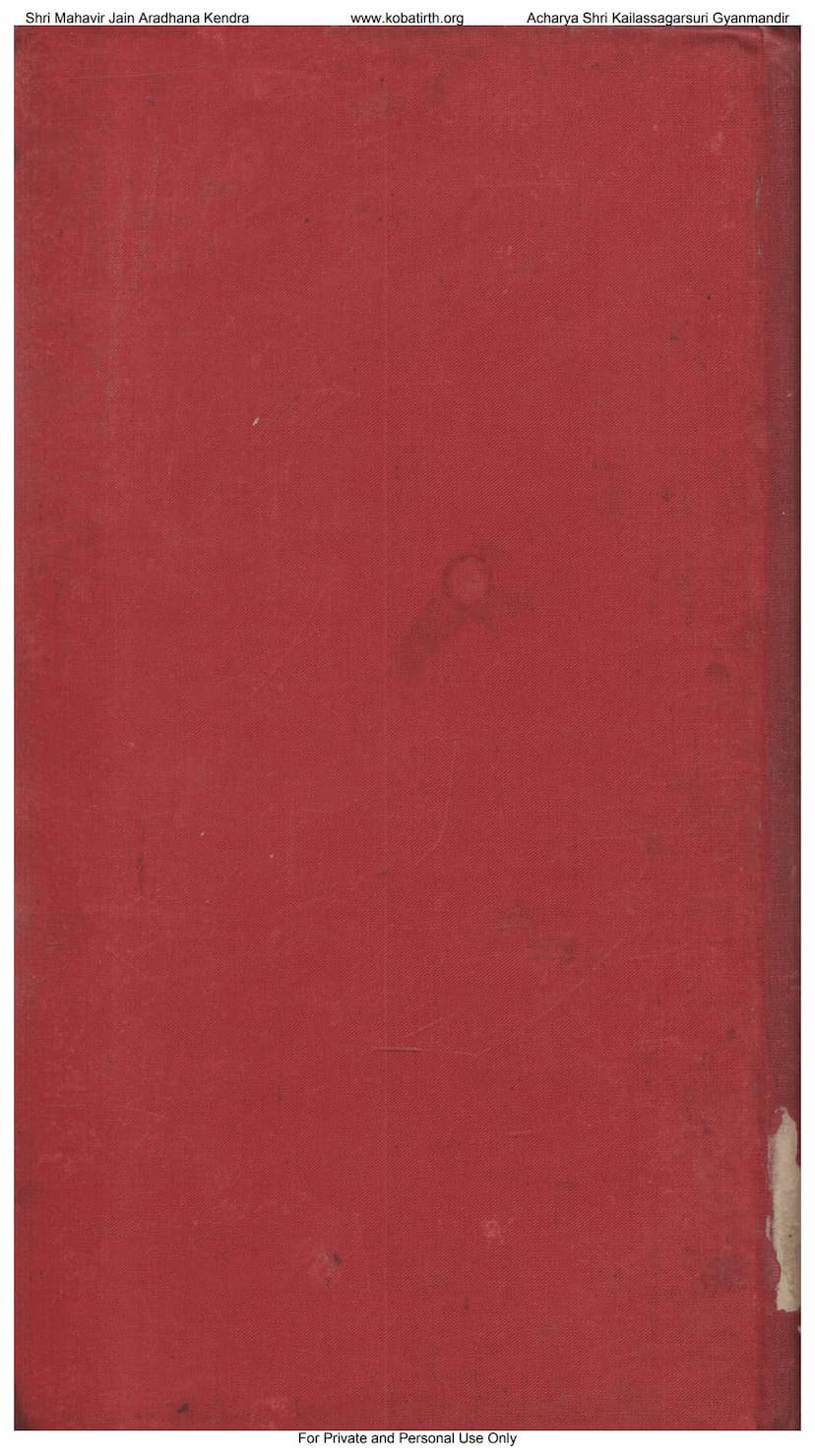Prakrit Paingalam
Added to library: September 2, 2025

Summary
Here's a comprehensive summary of the provided Jain text, Prākr̥ta-Paingalam, based on the text and the provided catalog link:
Prākr̥ta-PaIfgaalam (Prākṛta-Paingalam)
-
Author: The text is attributed to Pingala, a sage, preceptor, and in some traditions, a serpent. However, the preface suggests that the name "Pingala" in this context might represent the founder of a school or the first writer in metrical science, with a significant time gap between the Sanskrit Chhandah-sūtram of Pingala and this Prākr̥ta-PaIfgaalam. The present work is edited and supplemented by Chandra Mohana Ghosha, M.B., B.A.
-
Publisher: The Asiatic Society of Bengal, Calcutta.
-
Publication Year: 1902.
-
Content: The Prākr̥ta-PaIfgaalam is a significant work on Prakrit prosody, focusing on the science of metrics. It is particularly known for its comprehensive treatment of Prakrit meters, going beyond the scope of the Sanskrit Chhandah-sūtram.
Key Aspects and Summary:
-
Nature of the Work: The Prākr̥ta-PaIfgaalam is a compilation from various authors, not necessarily the work of a single individual. Portions might have been added to an original framework. The text utilizes Prakrit, a vernacular language, for its discussion of prosody, making it accessible to a wider audience compared to Sanskrit prosody texts.
-
Metrical Laws: The work contains germs of two metrical laws, not formally enunciated in Pingala's Sanskrit aphorisms, but elaborated upon in later times and in Prakrit. These are identified by the editor as:
- (I) Combination (संश्लेषण - saṃśleṣaṇa): The combination of metrical units.
- (II) Equivalent Substitution (विकल्प - vikalpa): The substitution of one metrical unit for another under certain conditions.
-
Age and Authorship:
- The preface clearly states that the age and authorship of the Prākr̥ta-PaIfgaalam are unknown.
- The name "Pingala" is adopted as representing a foundational figure in metrical science.
- The work is estimated to have appeared no earlier than the fourteenth century CE, while Pingala's Sanskrit aphorisms are believed to date back to the time of Panini or his commentator Patanjali.
- Evidence for the fourteenth-century dating includes mentions of Hámir, a Rajput sovereign whose reign began in AD 1302, and the use of words related to Mahomedan influence in India (e.g., "Sultan", "Khorásán").
-
Structure and Content: The book is divided into two main parts:
- Part I: Mātrāvr̥ttam (मात्रावृत्तम्): This section deals with metrical feet based on mātrās (syllabic instants). It covers concepts like gurū and laghū syllables, metrical faults (chhandōbhaṅgadōṣa), various types of mātrā-gaṇas (metrical units based on mātrās), prastāra (permutation of meters), and the naming conventions for these units. It details various Prakrit meters classified by the number of mātrās or syllables.
- Part II: Varṇavr̥ttam (वर्णवृत्तम्): This section focuses on metrical feet based on varṇas (syllables, often considered in terms of their metrical weight as short/long or laghu/guru). It discusses metrical units (gaṇas) and their classifications, including the deities associated with them and their friendly or inimical relationships. It also covers the "meru" and "patākā" diagrams as devices for metrical analysis.
-
Commentaries: The edition includes commentaries from:
- Viśvanātha-Pañchānana (विश्वानाथ-पञ्चानन): Identified as the son of Vidyānivasa, his commentary is named Pingala-ṭīkā.
- Vansidhara (वंशोधर): Son of Krishnadeva, his commentary is named Pingala-Prakāśa and was completed in Ashadha, 1699 Saka.
- Krishna (कृष्ण): His commentary is labelled "Vansidhari" on the manuscript cover.
- Yādavendra (यादवेन्द्र): His commentary is named Pingala-tattwa-Prakāśikā.
-
Editorial Work: Chandra Mohana Ghosha's contribution includes editing, collating various manuscripts (A to H), supplementing the text with a complete index and glossary, and providing suggestions in brackets for textual gaps or improvements.
-
Metrical Science in Ancient India: The preface highlights the advanced nature of metrical literature in ancient India, comparing its systematic exposition to modern scientific methods. It notes that metrical literature preceded the codified rules of versification, which were generalizations from the intuitive expressions of early poets.
-
Prakrit Metres: The work demonstrates the amplification and addition of metrical devices in Prakrit compared to Sanskrit. Concepts like Mātrā and Varṇa Meru and Patākā are mentioned as superadded elements since the time of Pingala's Sanskrit aphorisms. The Prākr̥ta-PaIfgaalam extensively details various Prakrit metres, many of which are named and described, providing examples of their structure.
In essence, Prākr̥ta-PaIfgaalam is a foundational text for understanding the intricacies of Prakrit prosody, offering a rich repository of meters and metrical principles, meticulously edited and supplemented with valuable commentaries. It showcases the evolution and unique developments of Indian metrical science in the Prakrit language.